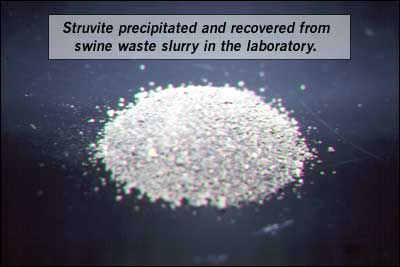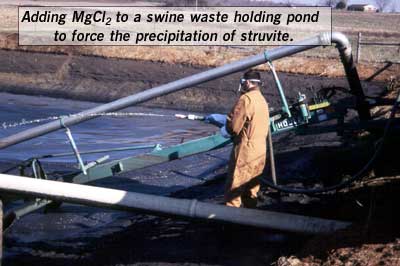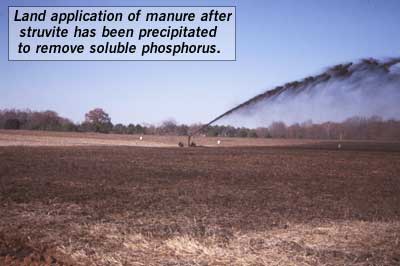
back to: Research Program Information
Laboratory and In-Situ Reductions of Soluble Phosphorus in Liquid Swine Waste Slurries
Robert T. Burns, Lara B. Moody, Forbes R. Walker, D. Raj Raman
Biosystems Engineering & Soil Science
Excessive loading of phosphorus (P) onto agricultural lands has been recognized as a surface water quality threat in both Europe and the United States. Methods that can reduce either P input to the environment or P movement into surface waters are needed to address this problem. The forced precipitation of struvite (MgNH4PO4·6H2O) from animal waste slurries prior to land application can reduce soluble phosphorus (SP) levels in manure slurries. It offers the potential to concentrate and remove P from the system. Using this approach, the recovered P could then be transferred to cropping locations that are P deficient. The economical concentration and transport of excess phosphorus to P deficient cropping areas would allow existing operations to remain viable in their current locations. It would also enable producers to land apply manure with a reduced risk of pollution.

In the laboratory, many researchers have reduced soluble phosphorus concentrations from anaerobic swine effluent by forcing the precipitation of struvite. However, no work had been done documenting field scale applications of this technology for swine waste. To address this issue, this works objectives were to 1) reduce soluble phosphorus concentrations from anaerobic swine slurries by forcing the precipitation of struvite in the laboratory and in the field and 2) identify the precipitated residual as struvite using x-ray diffraction techniques.

To precipitate struvite, Mg, NH4, and PO4 must all be available. Often, the limiting nutrient is Mg. Magnesium can be supplemented in many forms; here Mg was ammended as magnesium chloride.

Laboratory and field experiments demonstrated that it is possible to significantly reduce the quantity of soluble phosphorus in swine manure slurry through the addition of MgCl2 (64 percent solution). Soluble phosphorus reductions of up to 76 and 90 percent were observed in laboratory and field experiments, respectively. X-ray diffraction analysis showed that the recovered precipitate contained struvite. However, the molar N:P:Mg ratio of the recovered precipitate suggest that the recovered material contained compounds in addition to struvite. The economics of this technology have yet to be evaluated. Future work on this project will involve field scale recovery of the precipitated struvite and plot trials using the struvite as an inorganic slow release fertilizer.